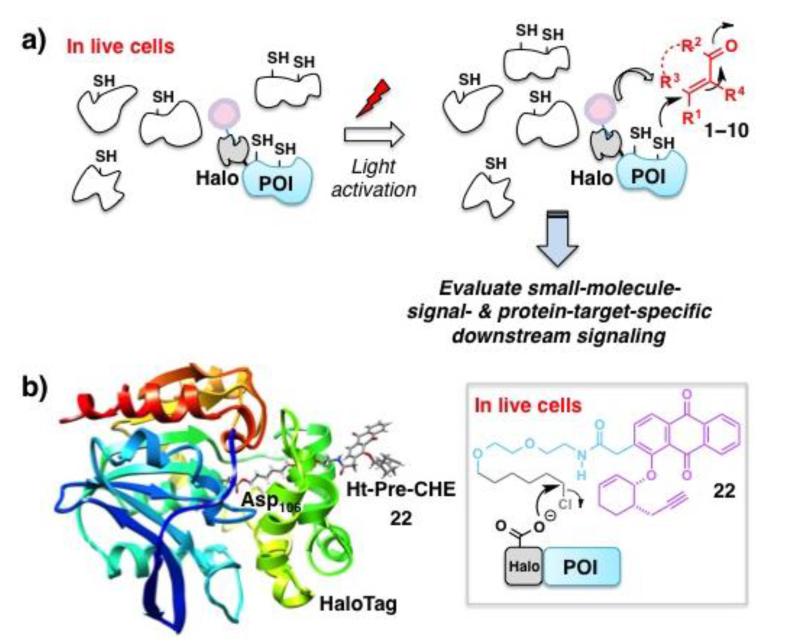Figure 1.
(a) The generalizable T-REX (targetable reactive electrophiles and oxidants) approach selectively delivers a reactive signaling electrophile of choice to specific redox-sensor protein of interest (POI) at a precise time in live cells. Photocaged precursor (pink sphere) is covalently linked to HaloTag fused to POI. Low-energy light activation (365 nm, 0.6 mW/cm2) liberates the desired reactive signal in stoichiometric amount to the microenvironment of the POI enabling targeted modification. The spatiotemproally precise modification upstream in turn enables quantitative evaluation of single- and target-specific response downstream. (b) Energy minimized model of Halo (PDB: 1BN6) with covalently bound caged precursor Ht-Pre-CHE 22 showed the caged motif is solvent exposed. Inset exemplifies covalent conjugation of 22 to the active site Asp residue on Halo.

